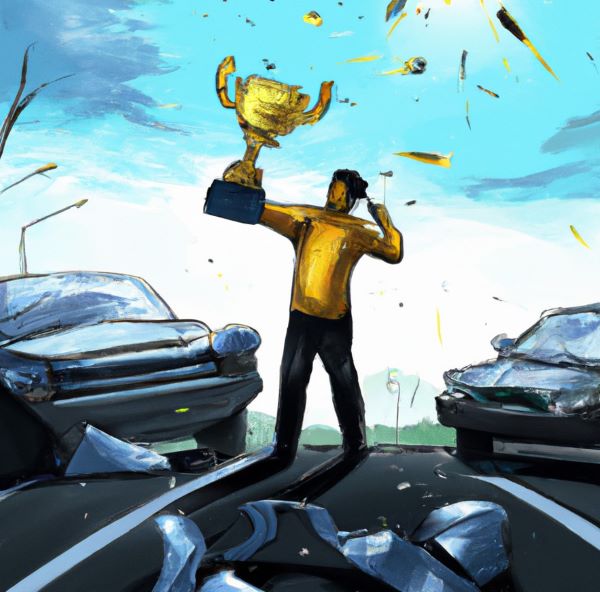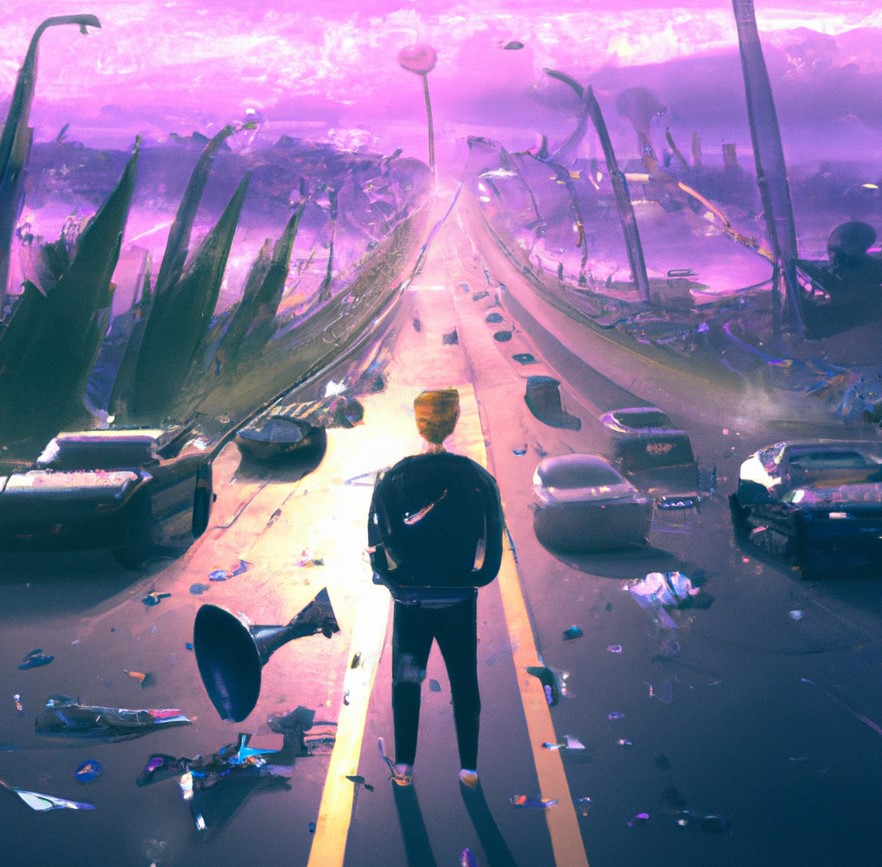You Can’t Spell “An Autopsy Hub” Without “Autobahn”
The Decision to Build a No–Speed–Limit Autobahn Highway from Gwangju to Yeongam Is the Recipient of the 2023 William Urbanski Most Reckless (and Brainless) Idea Award
By William Urbanski
We have a winner!!! 2023 so far has been an incredible year for terrible initiatives, and there was some stiff competition for the 2023 William Urbanski Most Reckless (and Brainless) Idea Award (WUMRBIA). And even though it is only July, we are shutting down the polling and declaring this year’s contest a wrap because there is no possible thing, no conceivable notion that could be more reckless (and brainless) than the recently announced and completely cockamamie scheme to build a no –speed –limit “Autobahn” –style highway between Gwangju and Yeongam.
As the chairman presiding over this award, I have to say I am personally impressed by this year’s winner because as far as crazy, poorly –thought –out and foolhardy ventures go, this one is a world-class, gold plated whopper. The person or persons responsible for this heedless project have raised the bar for years to come! Bravo!

Background
As you probably know, the German Autobahn is a highway famous for the fact that large (mainly rural) sections of it lack speed limits. The Autobahn has not become a mass graveyard for car crash victims for a number of reasons. Using the left lane for passing only is strictly enforced, as is tailgating. The roads are well maintained and nationwide, German cars have to go through rigorous regular inspections to make sure they are safe to use. Perhaps most importantly, all German drivers must undergo an austere and rigid program (which costs thousands of dollars, includes first-aid training as well as difficult in-car and written exams) to obtain their drivers licences.licenses. All of these factors create a driving environment where people respect the power of their vehicles as well as the rules of the road. This adherence to a strict regulatory driving infrastructure is the foundation upon which the Autobahn was built.
This German model stands in stark juxtaposition to the driving situation around Korea, which as anyone who has gotten behind the wheel here can attest to, is an every –man –for –himself, chaotic mess where the rule of law is nothing but a mere suggestion.
Why, Just, Why?
Since there is nothing that a “no –speed –limit highway in Jeollanam-do” can accomplish that a regular highway cannot (besides causing a dramatic increase in drivers meeting their fiery and untimely demise), the real question is “To whose benefit is it to build this thing?” Ostensibly, it is being created ““to provide young people with the thrill of high-speed driving“” (no, I am not making that up:; it is an official quote from a prominent politician who I will not mention by name). ““Thrill“” is definitely one way to describe the myriad sensations going through a young person‘’s mind when the vehicle they are perilously driving at 240 km/h skids out of control and crashes into multiple other cars while hurdling through the air and bursting into flames. And who exactly are these “young people” who would want to experience the “thrill of high –speed driving”? Obviously, this is a euphemism for able-bodied men who have access to their daddy’s BMW.
The only other plausible reason for the creation of this deathtrap road is an obvious scheme to attract national and international attention to the area. Well, mission accomplished, and while they are at it, they might as well go ahead and buy the world’s biggest spatula because they are going to need it to scrape all remains of the aforementioned able-bodied men (and the victims they take with them when they crash their daddy’s BMW while driving 240km/h) off the Gwangju Autobahn.

The Fast and the Injurious
Besides the boring old environmental and safety problems with building highways, I cannot help but think there are a couple of other things that the grand architects of this project, and this year’s winners of the WUMRBIA, did not quite think through before actually sitting down and deciding that the Gwangju Autobahn would be anything but a monument to human folly.
First of all, while the speedometers on most modern cars do go up to about 200 km/h, the vast majority of cars are simply not built to handle those speeds. If you took the average Sonata, Genesis, or Santa Fe and drove it for a few minutes with the pedal to the metal, it would send the pistons flying directly through the hood. Realistically, though, if you were to drive at full tilt anywhere in Korea, blowing your engine would be the least of your problems, since there is an excellent chance of causing a collision and extending your high-speed trek directly into the afterlife.
Second, there is more to driving fast than just slamming down the gas pedal. Cars that drive at very high speeds also need to be tuned so that the driver can, you know, actually control what the car does. This means precision suspension and special tires for starters. If people cannot be bothered to activate their turn signals when changing lanes, why would they spend time, energy, and money to turn their daily cruiser into a race car?
Third, even if a driver is very experienced and well trained, physics ensures any car that crashes at very high speeds instantly becomes little more than a metal coffin. I think the president of the Insurance Institute for Highway Safety said it best: “Higher speed limits cancel out the benefits of vehicle safety improvements like airbags and improved structural designs. The faster a driver is going before a crash, the less likely it is that they’ll be able to get down to a survivable speed even if they have a chance to brake before impact.”

Safety, Smafety
The Gwangju Autobahn was in good company among the other shortlisted contenders for the 2023 WUMRBIA. Tongdo Fantasia Amusement Park in Yangsan abandoned a Bengal tiger in a cage for three years, which pretty much sets a new standard of “animal rights abuse” and “colossal moral failure.”. The ill-fated and money-squandering Jisan IC exposed the depths of the city’s institutional shortcomings, but at least it was done to try to address the actual, real problem of traffic congestion.
When it comes to this year’s winner, encouraging people to (literally) drive as fast as they possibly can in a country that has some of the highest vehicle fatality rates in the OECD was the kind of egregious and reckless disregard for public safety that helped it clinch the grand prize.
It is tough to say if there is a public policy failure or institutional calamity will be able to up the ante in 2024, but we can keep our fingers crossed. At this point they will pretty much have to legalize drinking and driving to outdo this year’s champion.
Whatever the future brings, one thing is for sure: If the Gwangju Autobahn ever gets built, I will be staying the heck off of it because I quite like not being a charred corpse.
The Author
William Urbanski is the managing editor of the Gwangju News. He is married and can use chopsticks.






